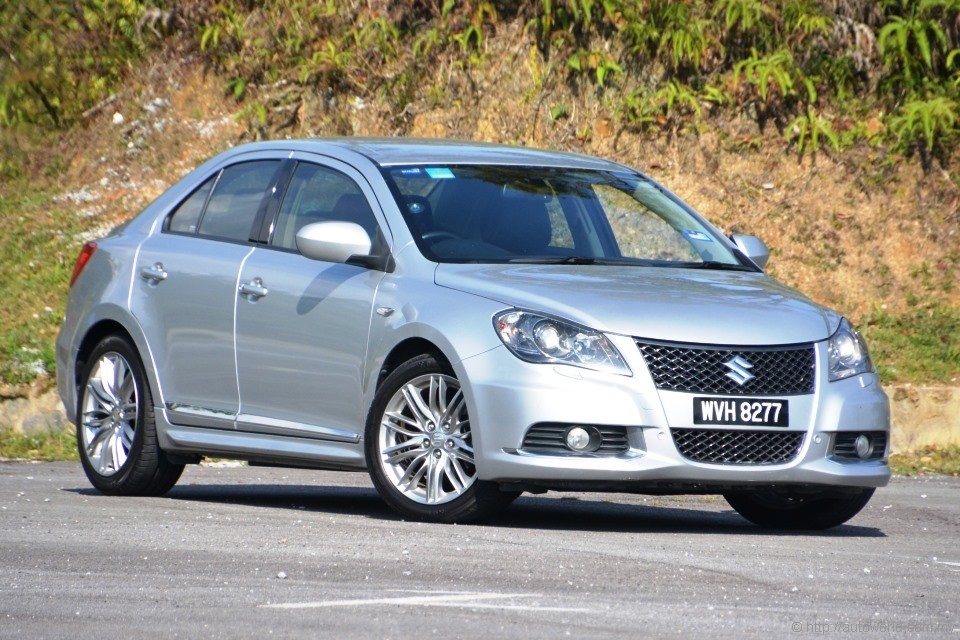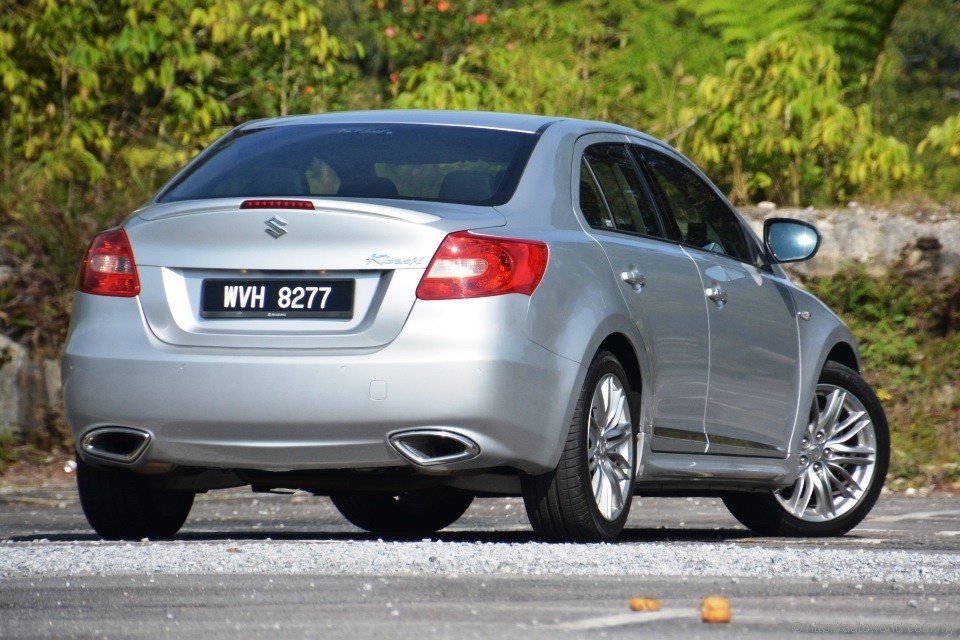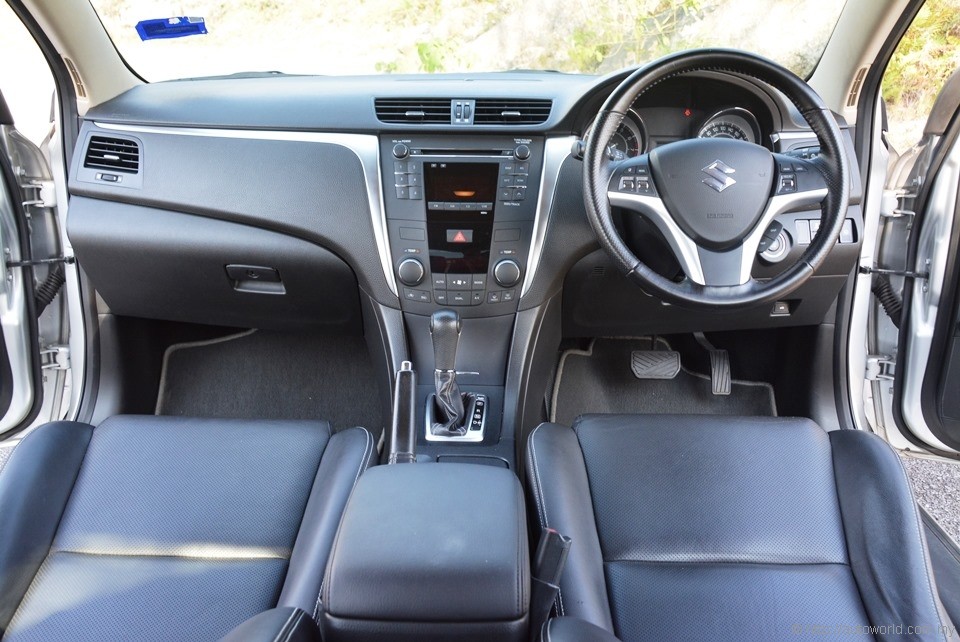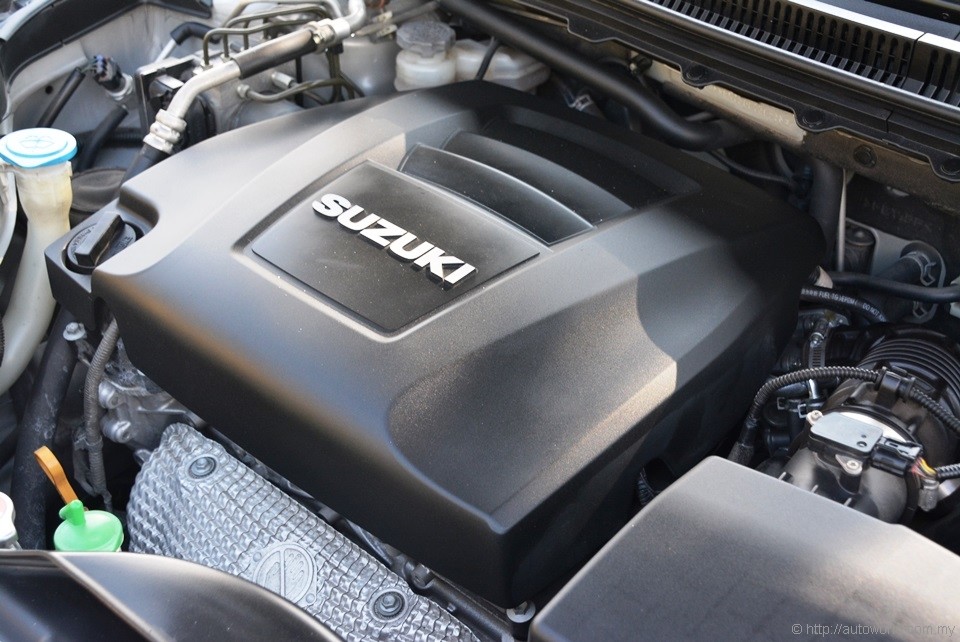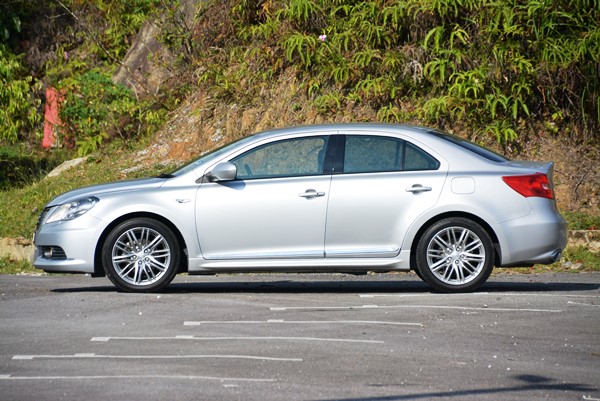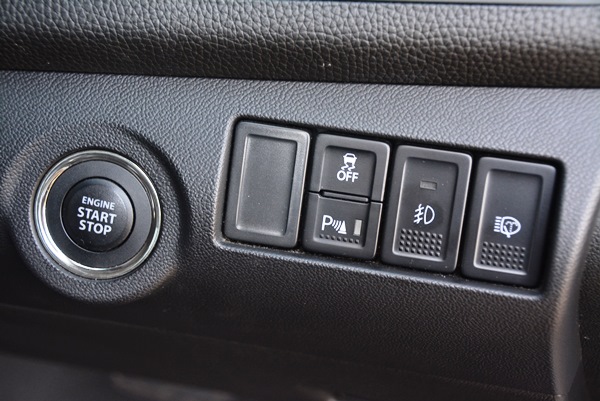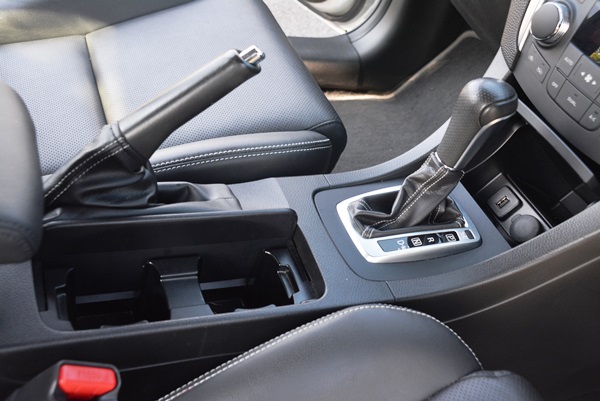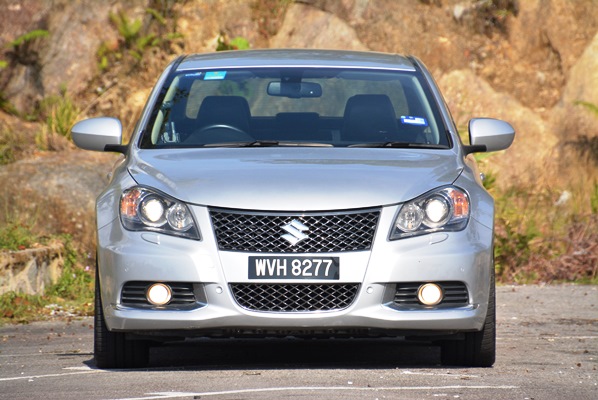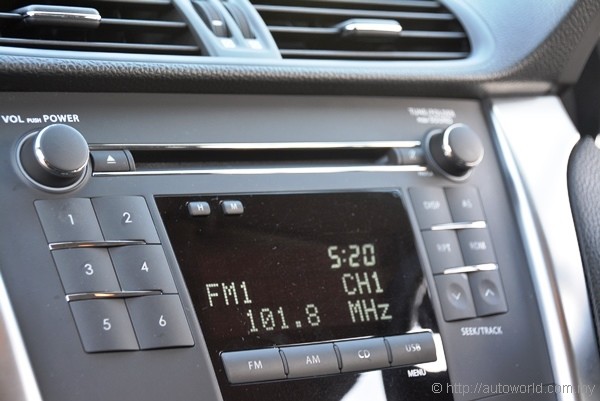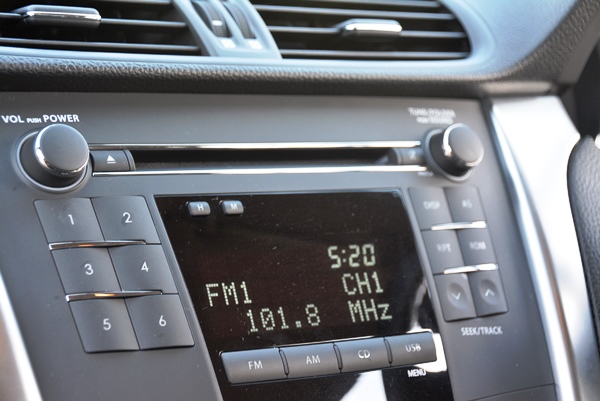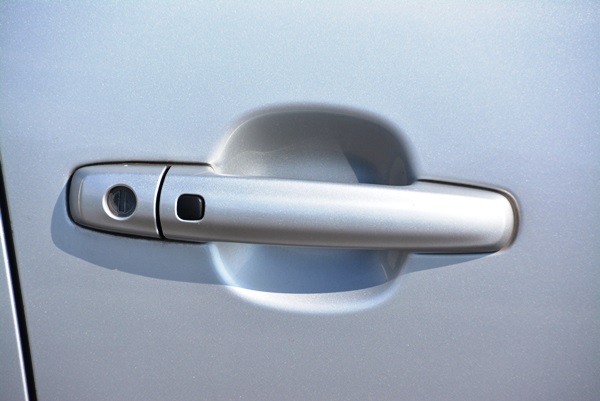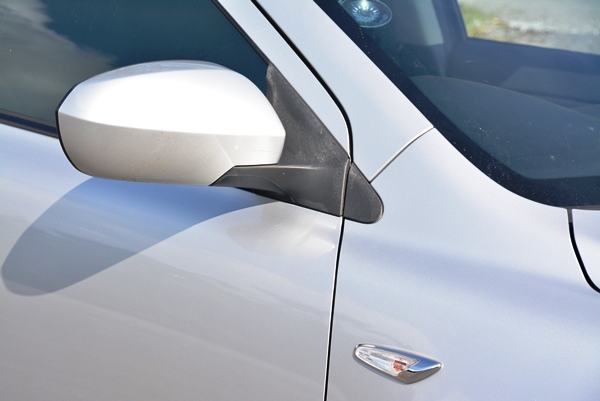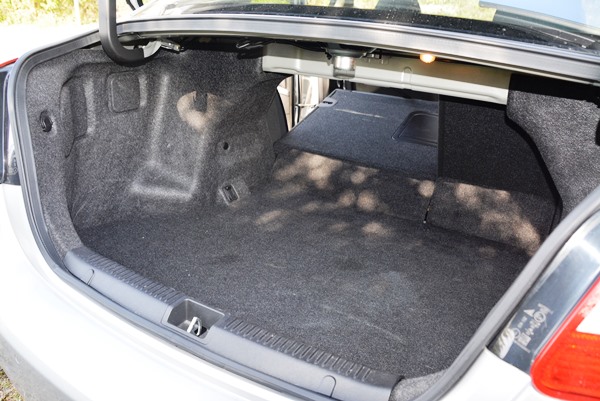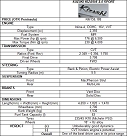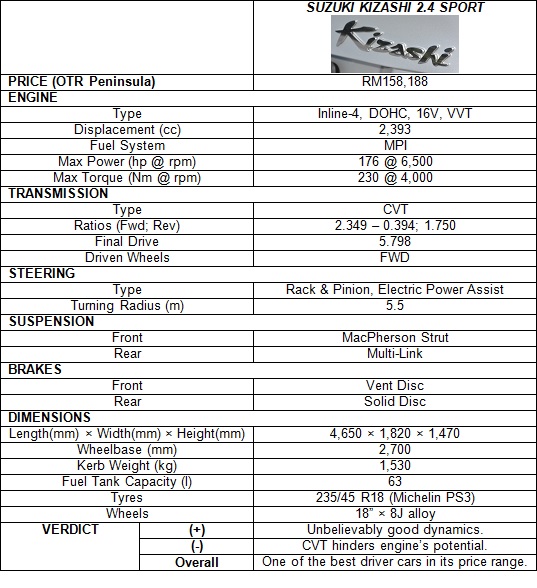Suzuki Kizashi Test Drive Review
Over the years, Suzuki has acquired an enviable reputation in building some finely-honed and much-loved small vehicles, be it passenger cars or mini SUVs. Launched in 2009, the stunning Kizashi sedan represents the company’s maiden effort to break out of that mould and expand its product offerings to segments above its comfort zone.
Suzuki’s ambition in making a straight jump from its A- and B-segment strongholds straight into the shark-infested waters of the D-segment is highly-laudable, and with the Kizashi, the company cannot be accused of making a half-baked effort. The Kizashi is a handsome-looking and well-equipped vehicle, that also happens to be very enjoyable to drive.
There is no doubting the magnificence of Suzuki’s efforts with the Kizashi, but the company’s good work weirdly and most tragically did not translate into meaningful sales volumes, and in recent months we read reports that the Kizashi lineage will, unfortunately if somewhat predictably, end with the model that you see here today.
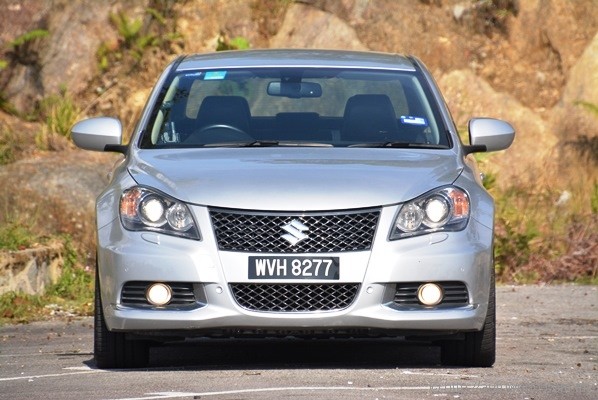 |
Prices & Variants
The Kizashi has been launched in Malaysia for nearly two years already, but its existence remains unknown to many people. People here know the Suzuki brand well enough, but few are aware that the company sells anything bigger than a Swift.
Its pricing is a point of contention, and depending on how you set your expectations, it can be seen as either a bargain or a rip-off. View it as a D-segment vehicle like Suzuki intends it, you’ll find that RM158,188 for the Sport example we’re testing here to be exceedingly good value, for it offers a 2.4-litre engine at 2.0-litre pricing.
 |
| The Kizashi is marketed as a D-segment vehicle, but its measurements are closer to the C-segment. |
The equation unfortunately tilts against Suzuki’s favour when most people examine the Kizashi for size and finds to be neither here nor there between the C- and D-segments in body size. Its 2,700mm wheelbase is matched by the new Corolla and Mazda3, whilst its footprint of 4,650mm by 1,820mm is closer to that of the Civic than the Accord. Such dimensions inevitably invite comparisons against C-segment vehicles instead, which consequently paints the Kizashi as overpriced.
There is a more affordable 2.4 SDLX variant, however, that comes with almost all functional equipment of our Sport-trimmed test car, but with smaller 17-inch alloy rims and minus some decorative external adornments. Going for the SDLX’s more modest appearance brings you very worthwhile savings of RM10k. At RM148,888, you’re still getting keyless entry, push start button, electronic stability control, auto HID projectors, cruise control, and six airbags.
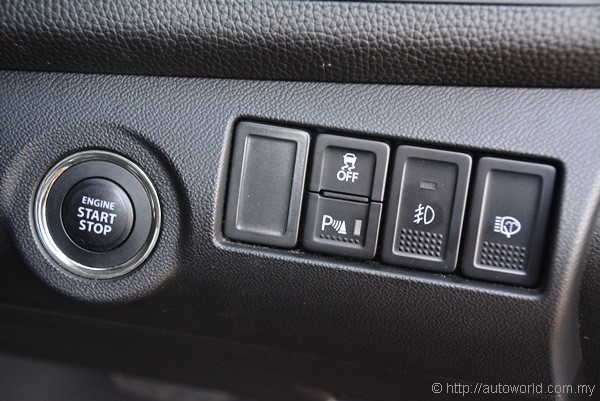 |
| Equipment includes start/stop button, parking sensors, and bi-xenon headlamps with washers. |
Specifications
At the heart of the Kizashi is an engine-drivetrain combo that sees Suzuki’s 2.4-litre J24B supply 176hp and 230Nm worth of thrust to the front wheels via a Jatco-sourced CVT. Paddle shifters behind the steering wheel provide access to six programmed virtual ratios.
Some countries get the option of a 6-speed manual transmission, but there are no alternative engine options anywhere in the world, and this lack of variety presumably contributed to the Kizashi’s downfall. Europe would most definitely have been more receptive of the Kizashi with a diesel engine, and the reduced displacement of a 2.0-litre mill might widen its appeal among Asian buyers. Sadly, these points look destined to remain as eternal what-ifs.
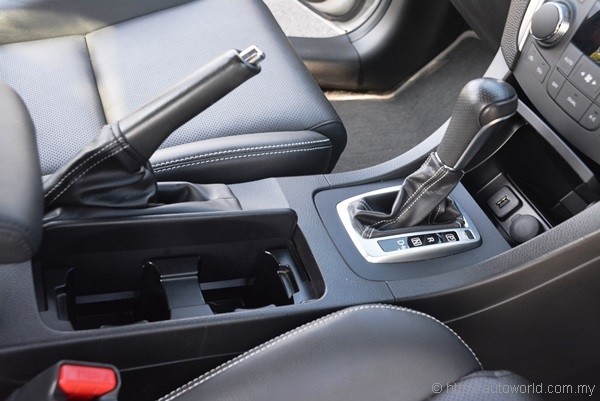 |
| Centre console offers adequate storage space for small items. |
Exterior
Despite going well into middle age, the Kizashi is one of the sharpest-looking cars to ply our roads. Its compact length and wide profile form the basis of an menacing stance that positively communicate its underlying dynamism. The wide-bulging shoulders add a further degree of aggression to an already overtly sporty shape in a segment typically known for conservative styling efforts.
Perhaps Suzuki’s greatest achievement with the Kizashi is that it managed to achieve aggression without sacrificing tastefulness; flair achieved without going overboard to fussiness. Paying close attention to the Kizashi’s styling details, one notices that despite very elaborate lines on the forward and aft fascias, Suzuki kept the body panels clean and relatively clear of unnecessary creases typical of today’s cars.
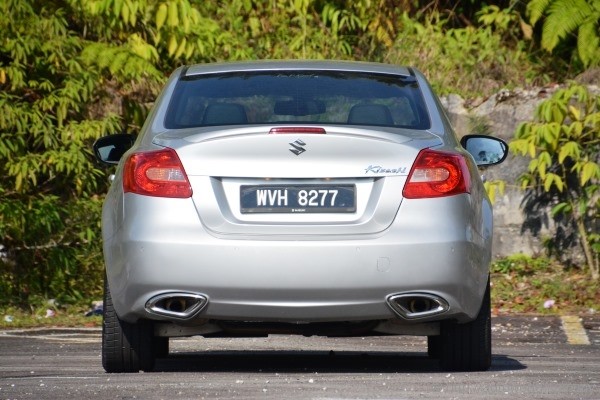 |
Interior
Whilst the Kizashi’s exterior was styled to wow, its interior contrasts with a relatively simple and uncomplicated layout. Outright space is not a strong point of the Kizashi, be it luggage volume (a meagre 461 litres) or passenger room, although to be fair, small item storage bins are aplenty and well-distributed.
Monochrome display elements on the audio, climate control, and instrument cluster regrettably feel out-of-date this day and age, but there is little to fault on a functionality and usability standpoint. It has enough equipment to cover the basics, and whilst some may lament the absence of a sunroof, the only item unchecked in our wishlist is a reverse camera, which to be fair will be very costly to integrate to the Kizashi’s aging dashboard.
Our test car had racked over 30,000km of mileage on its clock, and the hard use it has been subject to is evident from various light scratch marks that can be seen on the base of its centre console cubby holes. Yet, the various panels remain tightly screwed together with no unpleasant rattles or misaligned panels – this points to a high order of build quality even if material selection was obviously made with a budget in mind, although durability appears clearly prioritized over perceived plushness.
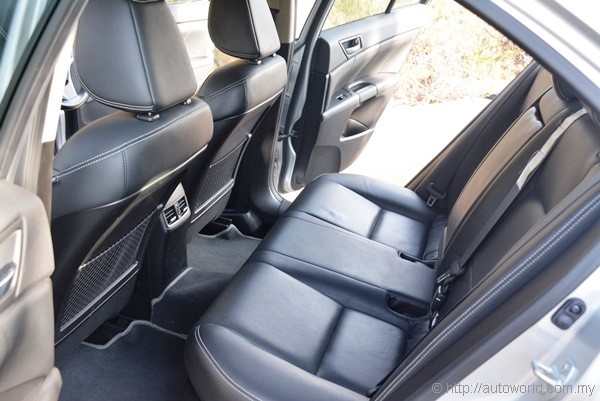 |
| Rear accommodation is tight by segment standards, but rear air-con vents are useful in our climate. |
Driving Experience
This is a vehicle with simply sensational dynamics. Whilst an underwhelming engine and transmission combination lets the package down a bit, handling is phenomenal, and it’s unfortunate that so few people will ever have the opportunity to experience it.
The Kizashi’s natural talent is cornering, which it does with impressive poise and ease. Sheer mechanical grip generated by this chassis borders on the supernatural, the tenacity which it just clings on to your selected line as you power past the apex is just jaw-dropping. It feels as if as the car is conjuring grip out of thin air. Couple this with a set of controls that feels pleasingly mechanical and immensely rich in feedback, it results in the Kizashi being a car that can be hustled with absolute confidence.
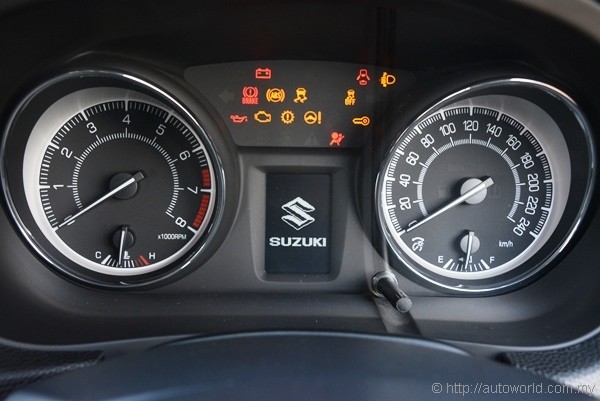 |
| Two-binnacle instrument cluster offers clear information, but monochrome MID looks outdated. |
It is not often a car in this price range earns comparisons with the Ford Mondeo, but I reckon the Kizashi will run the Ford’s class-leading dynamics close on winding roads, even though the Mondeo’s turbocharged EcoBoost powerplant should ultimately settle the contest on the highways. To sum it up, the Kizashi is average on the straights but outstanding along bends.
For more mundane applications of urban driving, the Kizashi is competent with few vices. Just as in the Swift, ride quality is beautifully judged, and even if the sporty-biased suspension has an obvious firmness to it, it never feels crashy, meaning this is a vehicle whose composure is difficult to unsettle – you can glide it across less than ideal surfaces without upsetting the chassis.
 |
| Side signal lights are fender-mounted rather than side mirror-mounted as per current trends. |
Verdict
The Kizashi’s biggest problem is that it is probably the wrong car for our times. As industry trends edge towards downsizing and turbocharged power, Suzuki’s inability to offer an alternative powertrain to its sole 2.4-litre engine severely limits its potential appeal. It also doesn’t help that the engine and transmission isn’t exactly a sterling combination, which is all the more unfortunate considering what a fantastic chassis Suzuki has engineered for this thing.
The Kizashi is a sensational effort from Suzuki, a company whom we should laud its audacity for stepping so far out of its comfort zone and doing a damned good job at it too. As a whole, the Kizashi is a decently-packaged and solidly-built vehicle, but its market positioning away from the perceived sweet spot of the D-segment ensures it will always be a segment outlier and that means Suzuki will not be able to sell enough of these to make a decent profit. In all likelihood, the Kizashi will be discontinued altogether once this model reaches the end of its product life cycle, and that will indeed be a real shame.
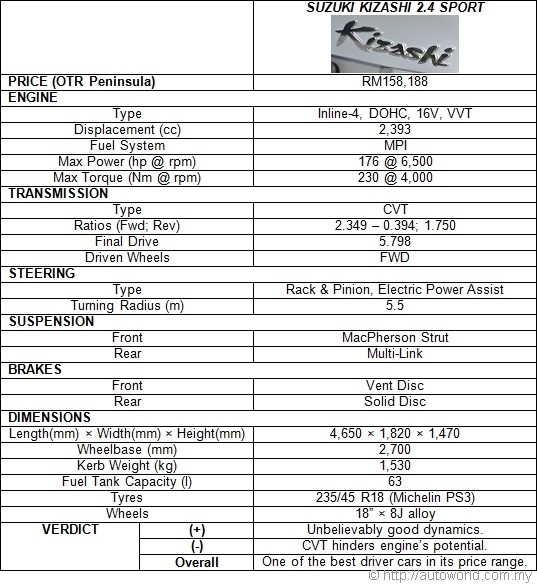 |




